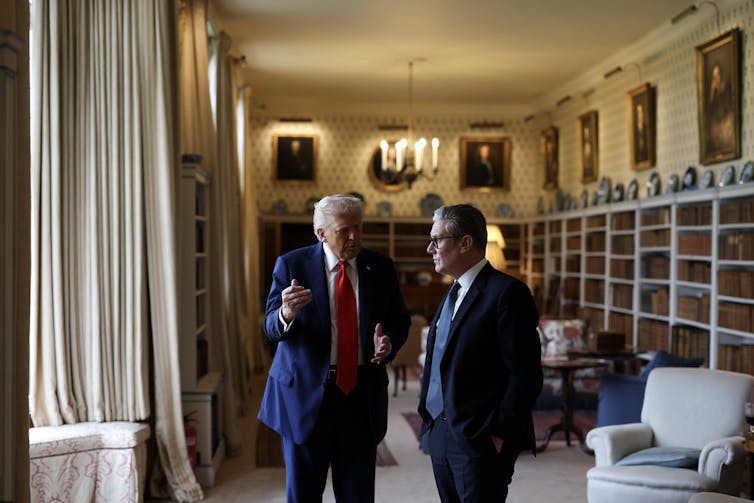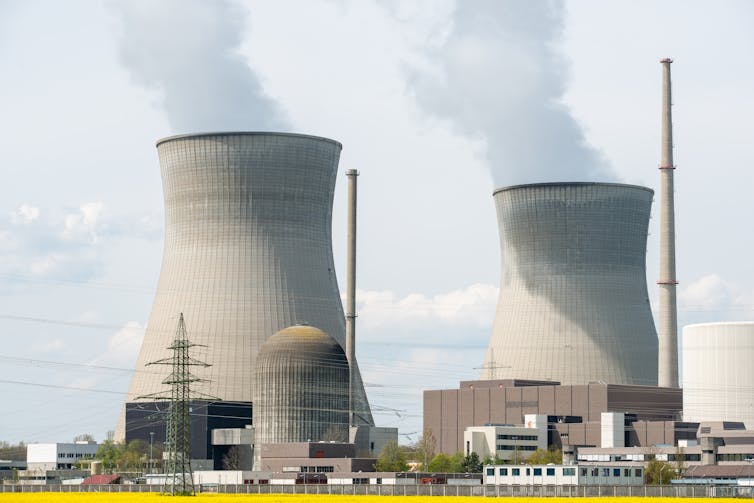Source: The Conversation – UK – By Jonathan Este, Senior International Affairs Editor, Associate Editor, The Conversation
This article was first published in The Conversation UK’s World Affairs Briefing email newsletter. Sign up to receive weekly analysis of the latest developments in international relations, direct to your inbox.
The report of the UN’s independent international commission of inquiry on Palestine, released this week, makes for gruelling reading. It found that Israel’s 23-month campaign in Gaza is being waged “with intent to destroy, in whole or in part, a national, ethnic, racial or religious group”. This, according to the commission, amounts to genocide under the Geneva conventions.
The detailed 72-page report has found that Israel’s military, under the direction of its political leaders, satisfy four of five acts specified by the convention as genocidal. This includes the genocidal act of “imposing measures intended to prevent births within the group”. This, the report said, was due to the Israel Defense Forces’ (IDF) attack on Gaza’s only IVF clinic at the end of 2023, destroying an estimated 4,000 embryos and 1,000 sperm samples.
The key issue in arguments around genocide, and the reason why charges are so rarely brought, is the word “intent”. To show the intent to destroy the Palestinian people, the report quotes Israeli prime minister Benjamin Netanyahu, his former defence minister Yoav Gallant, Israeli president Isaac Herzog and other political and military leaders using “inciting, provocative, dehumanising language”. The report gives several examples of this language. It concludes: “The statements were received by the Israeli security forces as an order to destroy Palestinians in Gaza and such order was indeed executed through military operations.”
Malak Benslama-Dabdoub, an expert in international human rights law at Royal Holloway, University of London, walks us through the report and summarises its findings. But crucially she asks: will this report make any difference? Attempts to condemn the violence and call for an end to the campaign in the UN security council have always fallen foul of America’s use of its security council veto.
Neither Israel not the US are signatories to the International Criminal Court, which has issued warrants against Netanyahu and Gallant. So Netanyahu has been able to visit the US without fear of arrest and the death toll in Gaza continues to rise daily. While Israel continues to be protected by its allies, writes Benslama-Dabdoub, it will continue to act with impunity.
Read more:
Israel is committing genocide in Gaza, says UN commission. But will it make any difference?
And so it goes on. Israel has just launched a major new ground offensive on Gaza City, where scores are already reported to have been killed and thousands have been forced to flee for their lives.
It’s hard to tell how many people lived in Gaza City before the assault began, but some estimates put it at around 590,000. A large proportion of these people will now be forced south, along with much of the rest of the population of the Strip.
It’s not hard to divine that the intention of the Netanyahu government is to push many, if not all, of these displaced people through the Rafah crossing into Egypt. Rory McCarthy, a Middle East expert and former Guardian correspondent in Jerusalem, says this much should be clear from a recent statement by the Israeli prime minister that: “The Egyptian foreign ministry prefers to imprison residents in Gaza who would prefer to leave the war zone.”
Egypt will not accept this, writes McCarthy. It already hosts around 150,000 displaced Palestinians and reacted very strongly against a suggestion by the US president, Donald Trump, that the population of Gaza could be relocated to Egypt and Jordan. (Jordan, which has more than 2 million Palestinians displaced in various conflicts, was also vehemently opposed to the idea.)
This is all putting Egypt’s relationship with Israel under severe pressure and destabilising the regime of Egypt’s strongman leader, Abdel Fattah al-Sisi, as well, McCarthy writes.
Read more:
Why Egypt is not bowing to pressure to accept Palestinian refugees
Relations between the two countries have been under pressure since the war began two years ago. It has reached the point that, at an emergency summit of Arab states after Israel launched an airstrike against Hamas leaders who were discussing a peace deal in Doha, the capital of Qatar earlier this month, the Egyptian leader referred to Israel – technically Egypt’s ally – as “the enemy”.
The strike against Qatar is likely to have serious repercussions across the region and is a disaster for diplomacy and mediation, writes M. Waqas Haider, an expert in Middle East diplomacy at Lancaster University. Qatar had built up a reputation as a safe haven in which warring parties could meet in safely for talks. Israel’s strike on Hamas in Qatar risks destroying that at a stroke.
Read more:
Israel’s strike on Qatar was a serious blow against diplomacy in the Middle East
Trump’s vision of a Gaza ‘Riviera’
The US president’s intention to move displaced Palestinians from Gaza to Egypt and Jordan was made clear in February shortly after the news emerged of a proposal to turn the post-war Gaza Strip into an enormous real estate investment. Trump posted a video, which few took too seriously at the time as it featured a large golden statue of the US president himself.
But last week the Washington Post published a 38-page document, resembling a property developer’s prospectus, which lays out in some detail a plan to turn Gaza from “a demolished Iranian proxy to a prosperous Abrahamic ally”. Any Palestinians left in the Strip would be given cash incentives to leave or tokens in return for their land entitling them to an apartment in one of the shiny new high-rise apartment blocks the plan envisages.

Image supplied.
Rafeef Ziadah says it’s a part of an ambitious plan to reposition the Middle East as part of a new US-led order linking India to Europe. Imec (the India–Middle East–Europe Economic Corridor) is envisaged as a counterweight to China’s belt and road initiative, writes Ziadah, who researches regional politics at King’s College London and has made something of a speciality of the politics of major infrastructure plans.
Read more:
Donald Trump’s vision for Gaza’s future: what a leaked plan tells us about US regional strategy
The forced relocation of people as a result of conflict is considered to be a war crime under international law. But once again, it is difficult to make such judgments unless they are tested in court. Another category of war crime arguably taking place regularly across Palestinian areas is collective punishment. This is defined as “a form of sanction imposed on persons or a group of persons in response to a crime committed by one of them or a member of the group”.
Leonie Fleischmann asserts that Israel has been using this tactic as a form of deterrence for years. Just last week the IDF detained 1,500 Palestinian men in retaliation for a bomb which went off in Jerusalem, injuring two. Days before two gunmen boarded a bus in the same city and started shooting, killing six people. Israel imposed harsh penalties against the shooters’ villages.
Fleischmann, an expert in Israeli politics at City St George’s, University of London, says Israel argues that this is legal, as an occupying power it has the right to protect its own security against what is likely to be a hostile population. But there are flaws to this argument, says Fleischmann, who explains how the laws against collective punishment work.
Read more:
What international law says about Israel’s collective punishments against Palestinian civilians
With the UK expected to recognise Palestinian statehood as soon as this weekend, the latest edition of our podcast, The Conversation Weekly, is a history of the Palestinian people’s aspirations for an independent state. Podcasts editor Gemma Ware interviews Maha Nassar, a US-based Palestinian historian, about the Palestinian liberation movement.
Sign up to receive our weekly World Affairs Briefing newsletter from The Conversation UK. Every Thursday we’ll bring you expert analysis of the big stories in international relations.
![]()
– ref. What will the UN’s Gaza genocide report achieve? – https://theconversation.com/what-will-the-uns-gaza-genocide-report-achieve-265617






